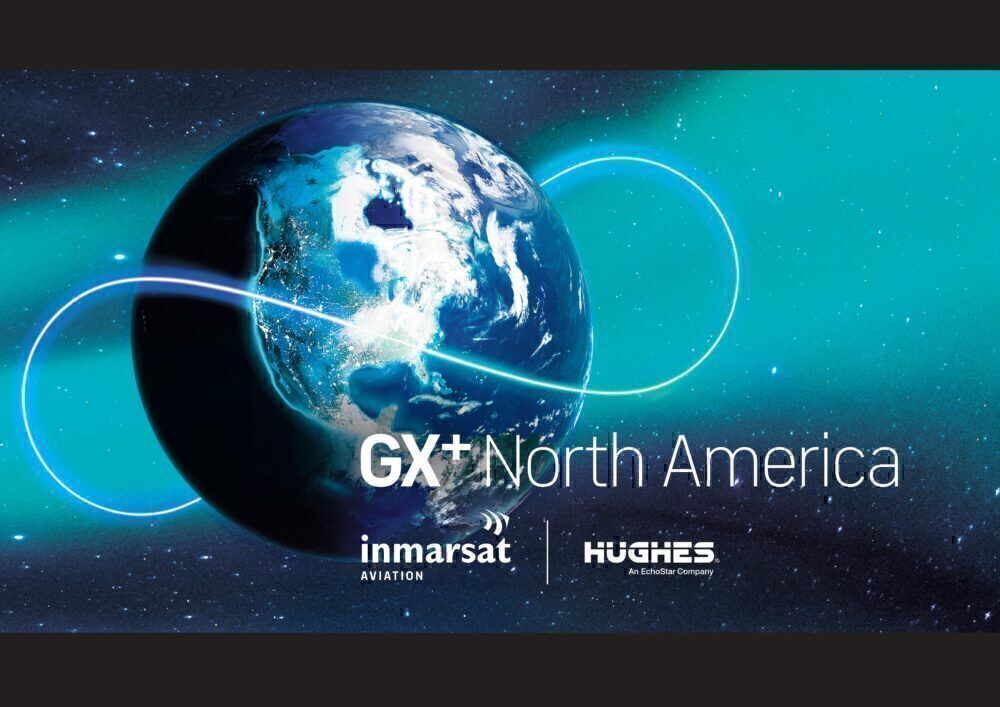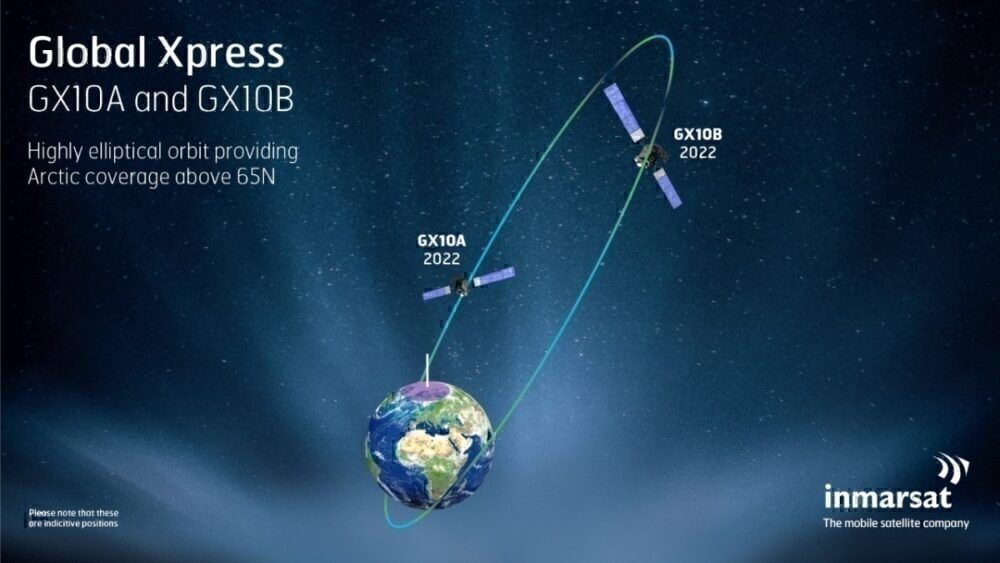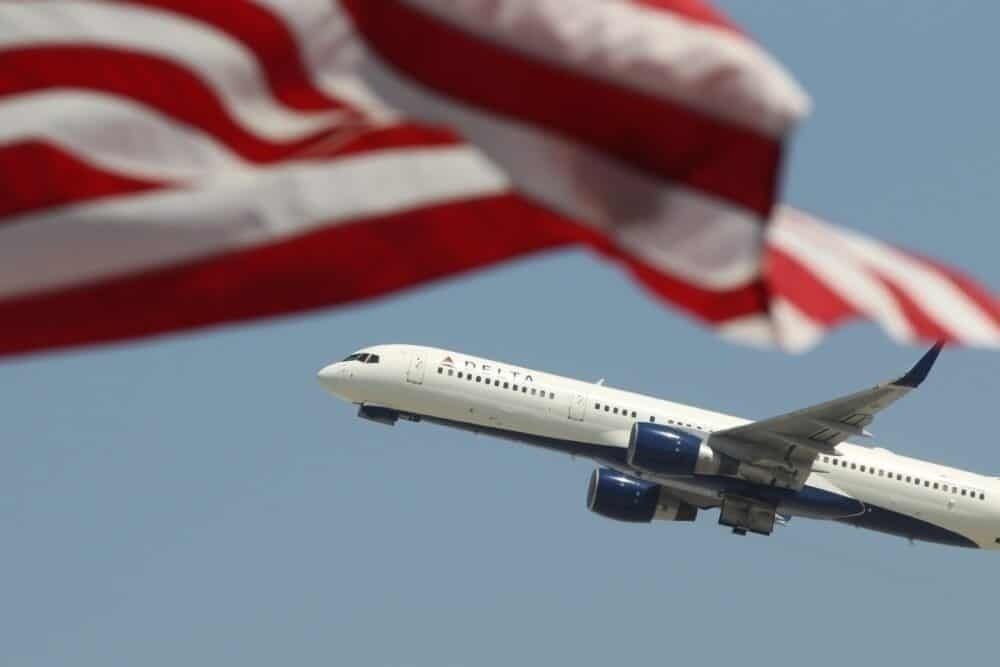Inmarsat has today revealed a strategic collaboration with Hughes to bring a step-change in inflight WiFi across North America. GX+ North America will leverage the best of Inmarsat’s Global Express (GX) worldwide network, alongside the enormous capacity of the Hughes JUPITER™ High-Throughput Satellite (HTS) constellation. The end result? Resilient, robust WiFi connectivity with unrivaled capacity, even above North America’s biggest hub airports.
Introducing GX+ North America
Inmarsat has today unveiled a strategic collaboration with Hughes, a leading broadband network provider, to bring unrivaled connectivity to airlines in North America. Dubbed GX+ North America, the new network has been specifically designed for airlines operating in the region, bringing improvements in capacity, reliability, and functionality.
GX+ North America integrates the unrivaled capacity of the Hughes JUPITER™ High-Throughput Satellite (HTS) constellation across North America with the extensive worldwide coverage and resilience of Inmarsat’s Global Xpress (GX) HTS satellite network. Working through the ThinKom Ka-band flat panel antenna, Inmarsat hopes to make it commercially available from 2021.
Simple Flying caught up with Philip Balaam, President of Inmarsat Aviation, to find out more about this groundbreaking offering and what it will bring to airlines. Describing the service, Balaam said,
“GX+ North America is a seamless combination of two world-class networks. It will allow airlines in North America to unlock their ambition with respect to connectivity. The legacy systems are all capacity-constrained; there simply isn't enough capacity, for even for current passenger demand, never mind the projected future uptick.”
A lack of capacity within the existing networks has long been a bug-bear of US airlines. It’s been a crucial reason behind the lack of free WiFi on US legacy carriers, with Delta previously noting that technical issues had prevented it from launching a free service. The airline broke its exclusivity deal with Gogo earlier this year in a bid to find a supplier to meet its needs.
GX+ North America could be just the service airlines like Delta have been looking for. Balaam stated that the improvements would be in a significant order of magnitude, telling us,
“It'll be five to 10 times more capacity than the legacy systems can deliver today. It's not just an improvement at the edges. It’s transformational.”
For passengers, this will mean an end to constrained bandwidth inflight, where they are only able to email and message. GX+ North America promises to bring streaming, shopping, and working to the skies and to move the timeline for widely available free-to-use connectivity closer to reality.
Stay informed: Sign up for our daily aviation news digest.
What’s good about GX+ North America?
The collaboration between Inmarsat and Hughes sets the bar for future inflight connectivity in North America. While part of the decision to combine the two companies was about how well the technology stacks together, Balaam noted that it was also about creating a seamless, premium global network with maximum capacity over North America.
“Hughes is the best network in North America. So the combination of the premium global network with the premium North American networks seemed to us a pretty good match.”
In terms of what it will deliver, the first and most crucial element will be the added capacity for the US market. Layering the high capacity Hughes network over the vast coverage of the GX network will add depth to the capabilities of GX+ North America while also providing seamless coverage everywhere around the world.
While not so important to passengers, an element of the service that will appeal to airlines is the level of redundancy built into the service. Balaam noted,
“There is a level of redundancy and resilience that you won't find elsewhere. Between the two companies, we've currently got seven satellites. Within four years, we will have 15. We have fully redundant ground systems and networks. For the airlines, their services to passengers are totally protected.”
Also notable is the scalability of the service. Inmarsat rarely stands still when it comes to deploying additional capacity and already has plans in the pipeline for several new satellite launches. 2021 will see the launch of 6A and 6B, advanced Ka-band payloads to add capacity where it’s needed most, and will be followed by GX7, 8, and 9 as well as the two HEO satellites, 10A and 10B, which will bring coverage to the polar regions of the planet.
Most importantly, these future launches are already fully funded, so no question marks are remaining over the technology's future-proofing. Balaam said,
“That's really important because it’s what the airline's want. They are interested in what we can deliver today. But what they really want to know is if we can continue to deliver in 10 years, when passengers are using 10 times as much data.”
With this robust, fully funded Technology Roadmap in place, the answer to that question is a resounding ‘yes.’
When will GX+ North America take off?
Before GX+ North America is made available for commercial use, Inmarsat will be conducting some prototype tests to prove the technology. These are expected to start later this year, and although the company remains quiet on the airline involved, Inmarsat told us,
“An early version of a prototype solution is already running on a 737 – details will be released in due course.”
The list of airlines that could be interested in this technology is long, but no names are being released yet. Most of the major US airlines are currently reviewing their connectivity solutions, so it’s a great time to bring something like this to the party. Balaam commented,
“We're in some pretty interesting discussions at the moment. We’re convinced that this will bring a level of change so profound that airlines just won’t be able to say no.”
The high capacity promised by GX+ North America will almost certainly move free WiFi a step closer to reality. Inmarsat has already proven the free to use model can work, such as on Air New Zealand, where more than a million sessions have been clocked up on the GX service.
Balaam predicts that we could see an operational, free inflight WiFi system deployed in North American by the end of next year to early 2022. That would be great news for fliers who are keen to stay connected and good for the airlines who can benefit from the many revenue-generating opportunities offered by free and fast connectivity.





